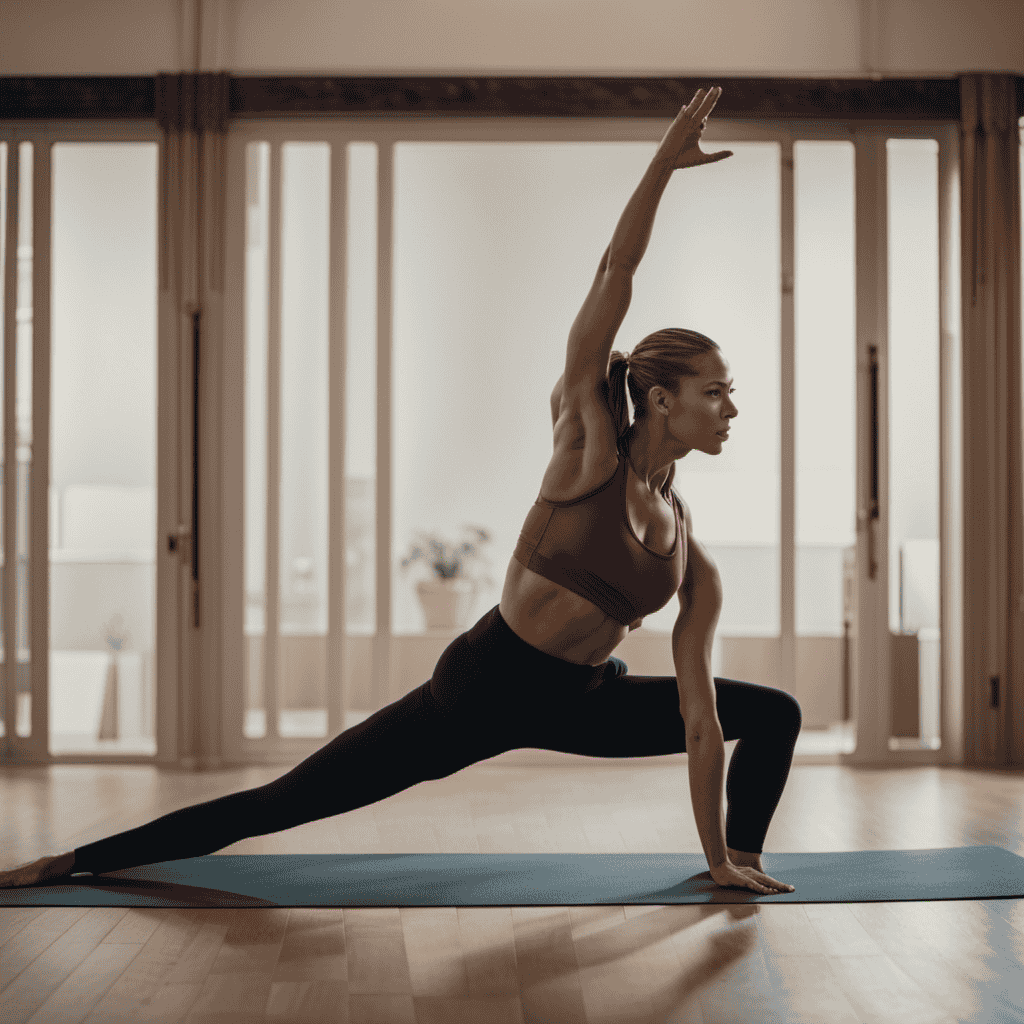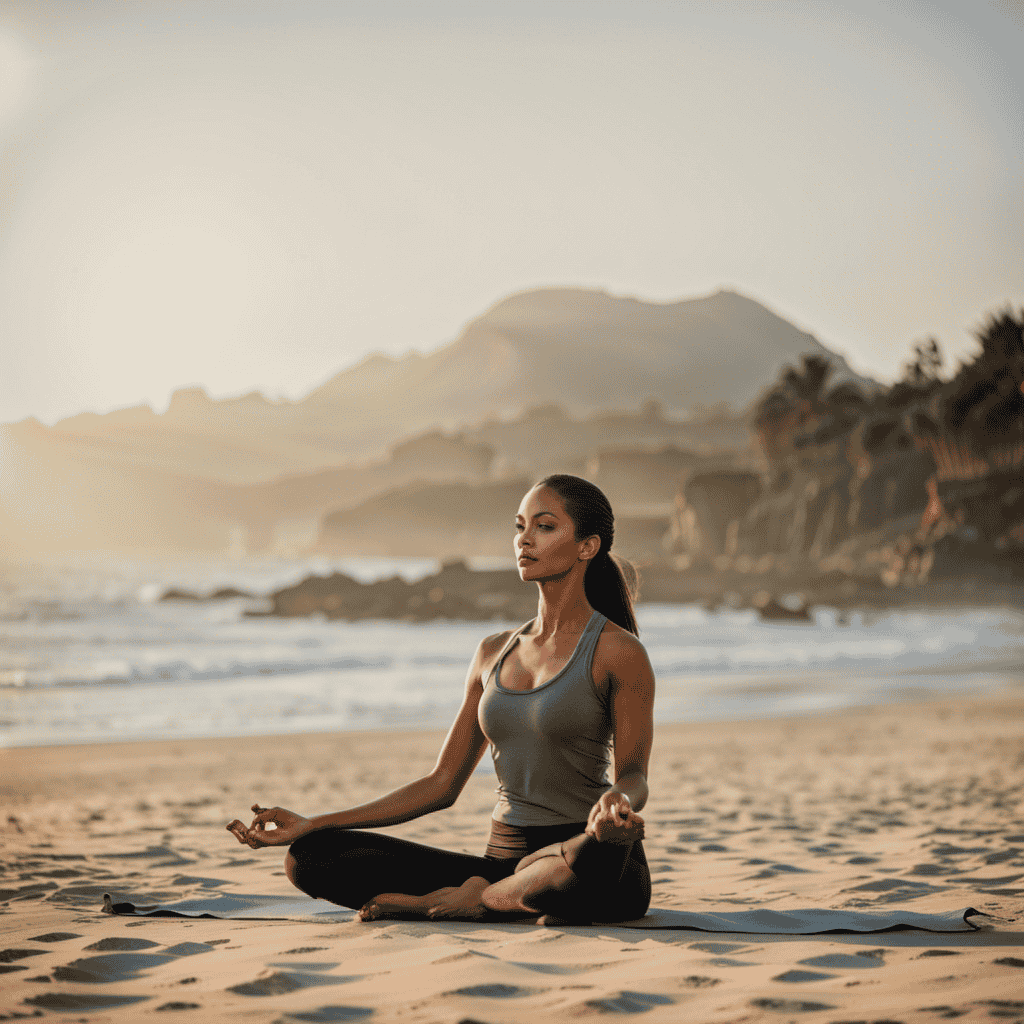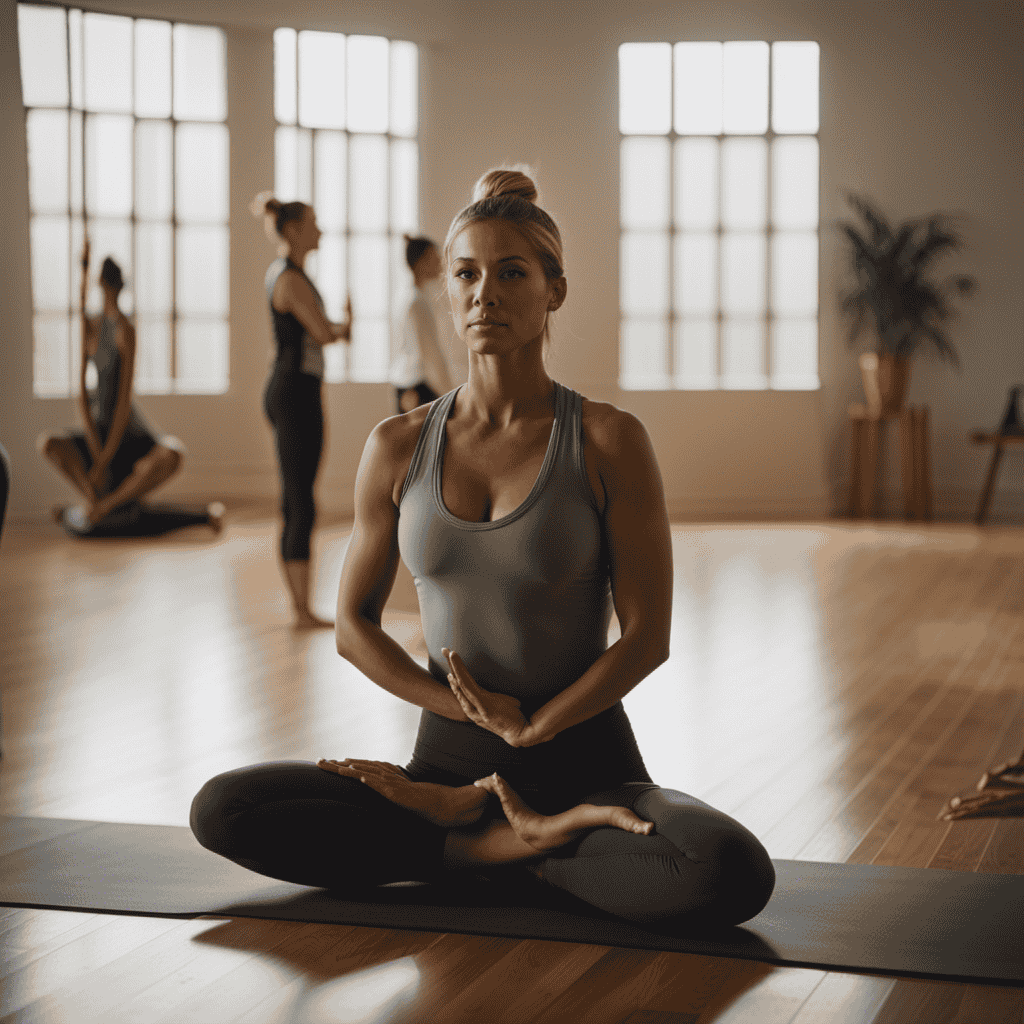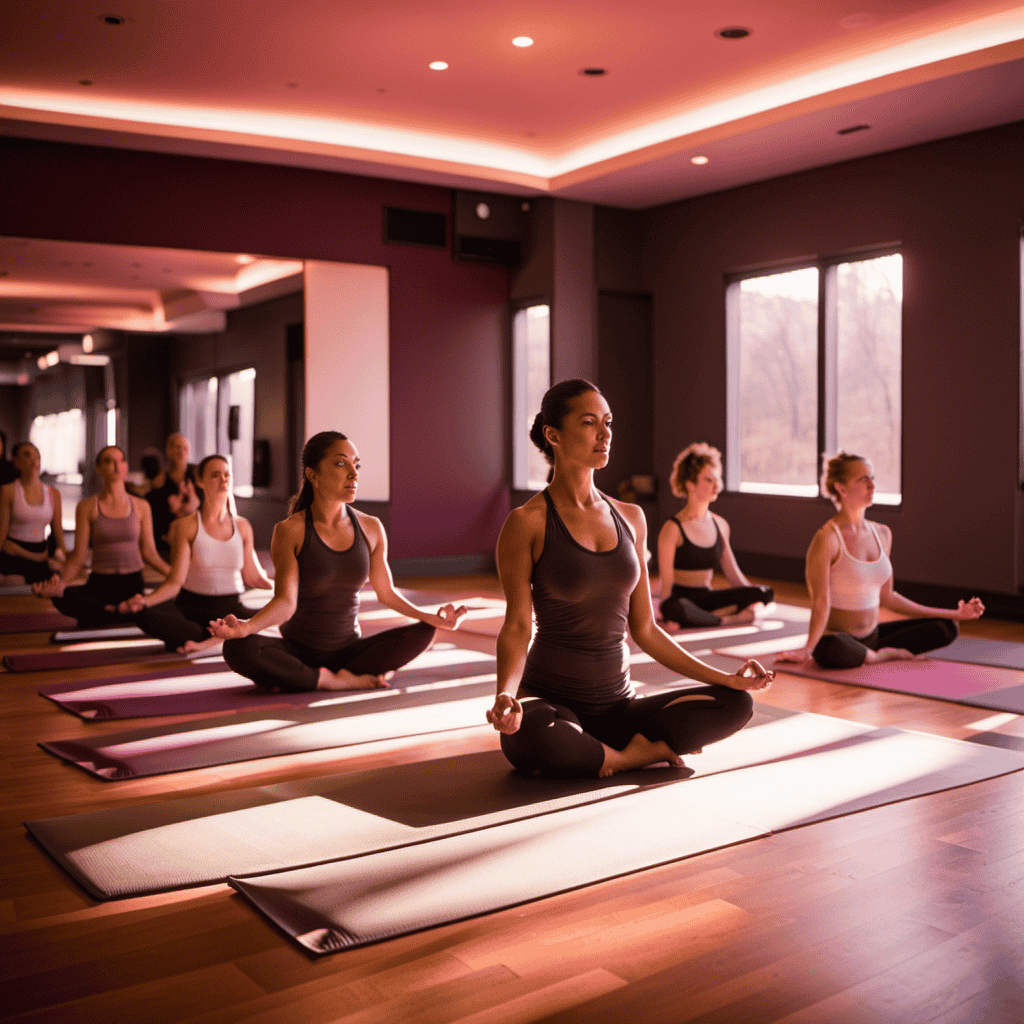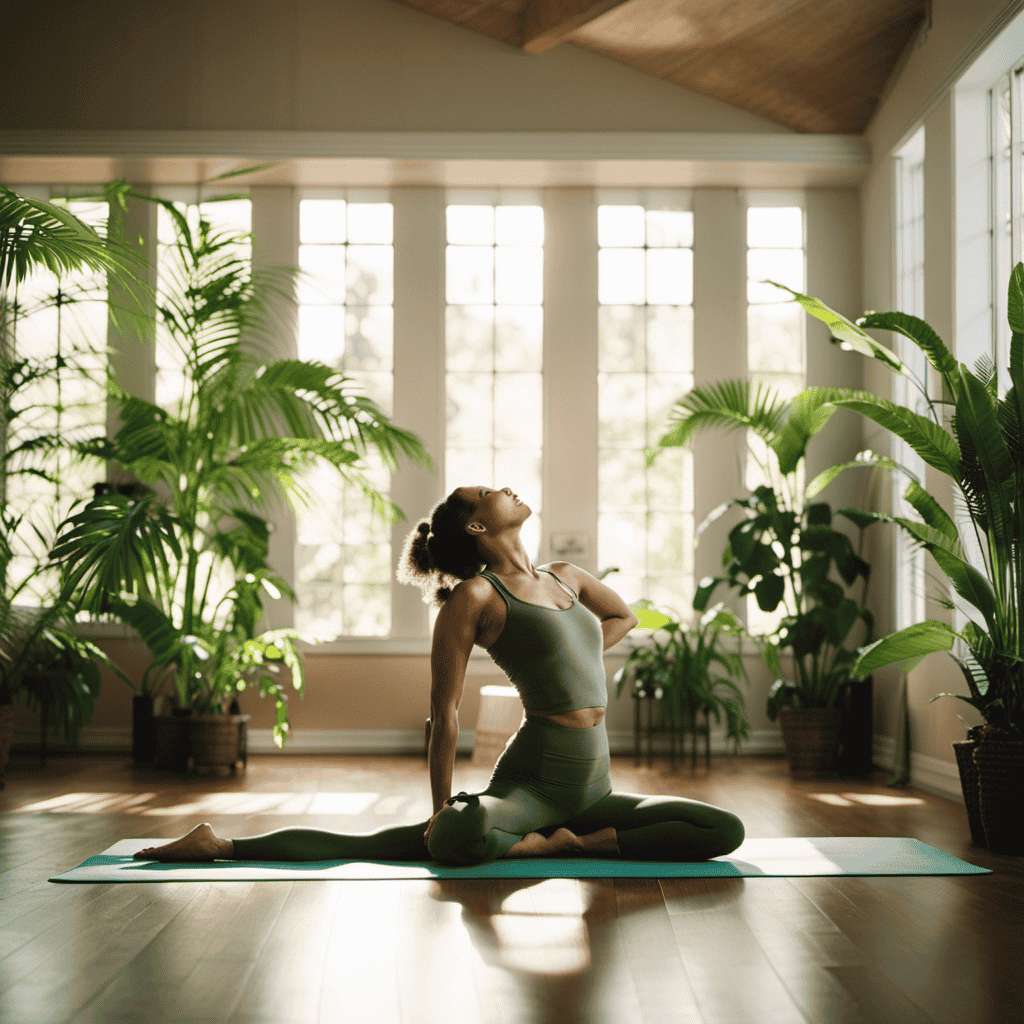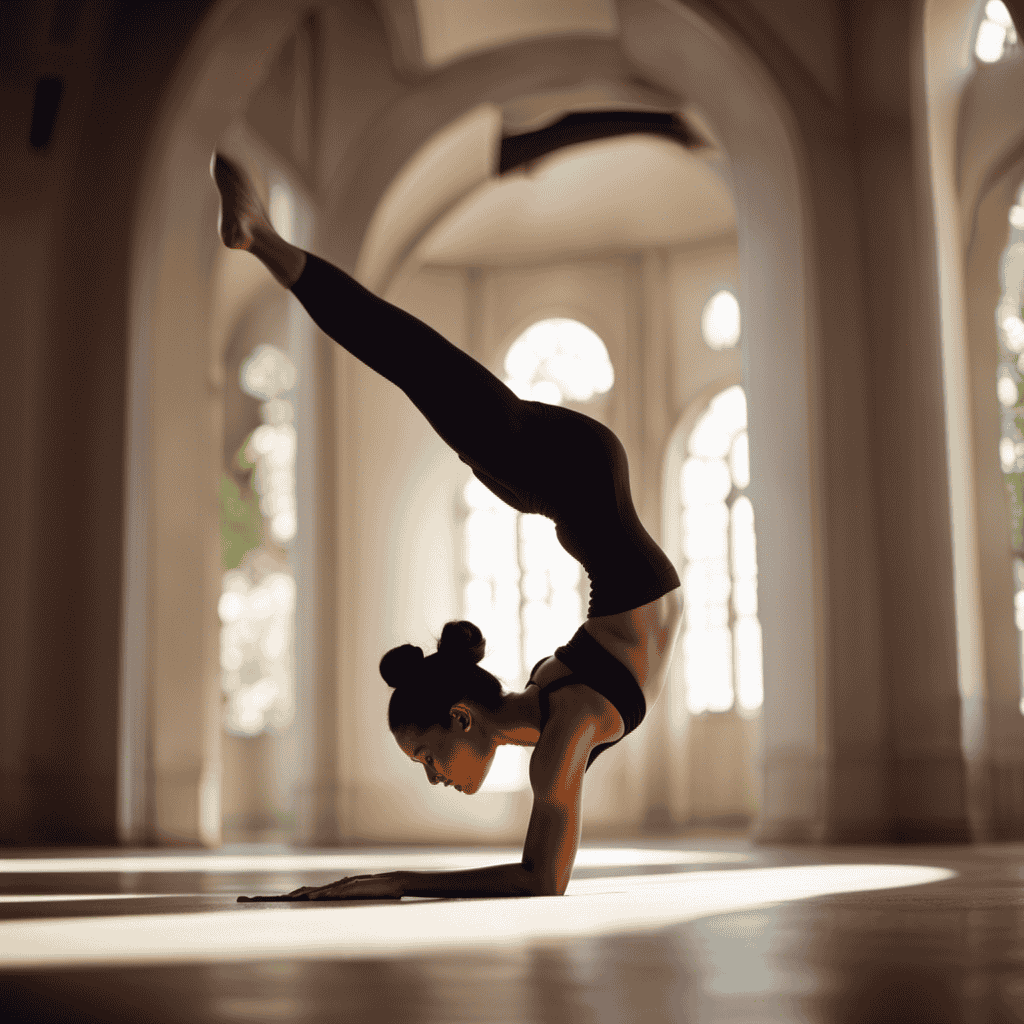Are you prepared to take your yoga practice to the next level? Get ready to conquer the yoga wheel and discover a realm of safety, proper form, and advantages.
This article is your ultimate guide to conquering this prop with confidence and finesse. From proper alignment and form to warming up and cooling down, we’ve got you covered.
Get ready to explore different poses and discover how to incorporate the yoga wheel into your practice for increased flexibility, strength, and balance.
Let’s dive in and roll towards a better yoga journey!
Key Takeaways
- Proper preparation and safety measures are important, such as cleaning and disinfecting the yoga mat, using a stable and non-slip surface, and seeking guidance from a qualified instructor.
- Maintaining proper alignment and form during yoga wheel exercises is crucial, including keeping the head aligned with the spine, relaxing and rolling the shoulders back, and aligning the hips with a neutral position.
- Warming up and cooling down before and after using the yoga wheel is essential, incorporating balancing poses, dynamic stretches, gentle movements, and deep breathing to allow the body to relax and recover.
- Incorporating the yoga wheel into practice can provide various benefits, such as deeper stretches, strengthened core muscles, increased flexibility, enhanced balance and stability, and added variety and challenge to the yoga practice.
Using a Yoga Wheel
I find it helpful to incorporate a yoga wheel into my practice. It can be used to stretch specific muscles and add variety and challenge to my routine.
When using a yoga wheel, it’s important to be aware of common mistakes to avoid. One common mistake is placing too much weight on the wheel, which can lead to instability and potential injuries. To prevent this, it’s crucial to distribute your weight evenly and engage your core for stability.
Additionally, beginners should start with a smaller wheel and gradually progress to larger ones. This helps build strength and flexibility. It’s also helpful to use the wheel on a stable and non-slip surface. This ensures safety during practice.
Listening to your body’s limits is also important to avoid overexertion. By following these tips, beginners can safely and effectively incorporate a yoga wheel into their practice.
Proper Alignment and Form
Maintaining proper alignment and form is crucial when using a yoga wheel. It ensures that you get the most out of your practice and reduces the risk of injury. Here are some key tips for maintaining proper posture and body alignment in yoga wheel poses:
- Keep your head aligned with your spine to maintain a neutral position and prevent strain on your neck.
- Relax your shoulders and roll them back to open up your chest and maintain a strong upper body.
- Maintain a slightly curved back to engage your core muscles and protect your spine.
- Align your hips with your knees and feet to maintain balance and stability throughout the poses.
By following these guidelines, you can maximize the benefits of using a yoga wheel and improve your strength, flexibility, and overall well-being. Remember to listen to your body and make adjustments as needed to ensure a safe and effective practice.
Warming Up and Cooling Down
To properly prepare my body for using a yoga wheel, I start by warming up and cooling down with various poses and gentle movements.
Before I begin, I find a quiet and peaceful space where I can focus on my practice.
I start with the Balancing Tree pose, which helps me find my balance and stability. This pose also stretches my legs and opens up my hips, preparing them for the use of the yoga wheel.
After that, I move on to the Legs Up the Wall pose, which helps me relax and release any tension in my lower body. This pose also improves blood circulation and reduces swelling in the legs.
By incorporating these poses into my warm-up and cool-down routine, I ensure that my body is properly prepared and ready to use the yoga wheel safely and effectively.
Different Poses with a Yoga Wheel
Using a yoga wheel can enhance my practice by providing opportunities for hip openers, bridge poses, thread the needle, and spinal twists.
The yoga wheel can be a great tool for opening up the hips and creating space in the body. By placing the wheel under the sacrum and rolling back and forth, I can gently stretch and release tension in the hip area.
Additionally, the wheel can be used to deepen spinal twists by placing it under the opposite shoulder and gently rolling back. This helps to create a deeper twist and increase flexibility in the spine.
Overall, incorporating the yoga wheel into my practice allows me to explore new poses and variations, adding diversity and challenge to my yoga routine.
Incorporating a Yoga Wheel into Practice
I can incorporate the yoga wheel into my practice by exploring different foot placements for variation and utilizing a yoga strap for added support. The yoga wheel offers endless possibilities to deepen my practice and challenge myself.
Here are three ways I can use the wheel effectively:
-
Using the wheel to stretch chest, shoulders, and back: By placing the wheel under my upper back and gently rolling back and forth, I can open up my chest and shoulders for a deeper stretch.
-
Trying different foot placements: By placing my feet on different parts of the wheel during poses like plank or downward dog, I can engage different muscles and explore new variations of the poses.
-
Utilizing a yoga strap: By attaching a yoga strap to the wheel and using it for support, I can safely explore more advanced poses and gradually work towards deeper stretches.
With these techniques, I can enhance my practice and reap the benefits of using a yoga wheel.
Frequently Asked Questions
What is the ideal size of a yoga wheel for beginners?
The ideal size of a yoga wheel for beginners is a smaller wheel. This ensures safety and allows for proper form and alignment. Using a smaller wheel also helps beginners gradually progress and reap the benefits of increased flexibility and strength.
Can I use a yoga wheel if I have an existing injury or medical condition?
Yes, you can use Yoga wheel modifications or alternatives if you have an existing injury or medical condition. Consult with a qualified instructor for personalized modifications to ensure your safety and to accommodate your specific needs.
How often should I clean and disinfect my yoga wheel?
I recommend regularly cleaning and disinfecting your yoga wheel to maintain hygiene and prevent the spread of germs. It’s important to find a cleaning frequency that works for you, considering factors like usage and personal preference. There are various disinfecting methods available, such as using a mild soap and water solution or a yoga mat cleaner.
Are there any specific precautions I should take when using a yoga wheel outdoors?
When using a yoga wheel outdoors, it’s important to ensure you have a weatherproof mat and ample space. Be mindful of obstacles and avoid hitting others. Practicing yoga outdoors offers the benefits of fresh air and connection with nature.
Is it necessary to use a yoga strap with a yoga wheel?
Using a yoga strap with a yoga wheel is not necessary, but it can be beneficial for advanced poses. It provides added support and stability, allowing for deeper stretching and increased flexibility.
Conclusion
In conclusion, mastering the yoga wheel is like unlocking a hidden treasure chest of possibilities in your yoga practice.
Just like a skilled artist creates a masterpiece with various tools, the yoga wheel becomes your trusted companion on the mat.
With its assistance, you can delve deeper into poses, target specific muscles, and experience a new level of strength, flexibility, and balance.
So, come, embrace the wheel and let it guide you on a transformative journey towards self-discovery and growth.
Your yoga practice will never be the same again.
